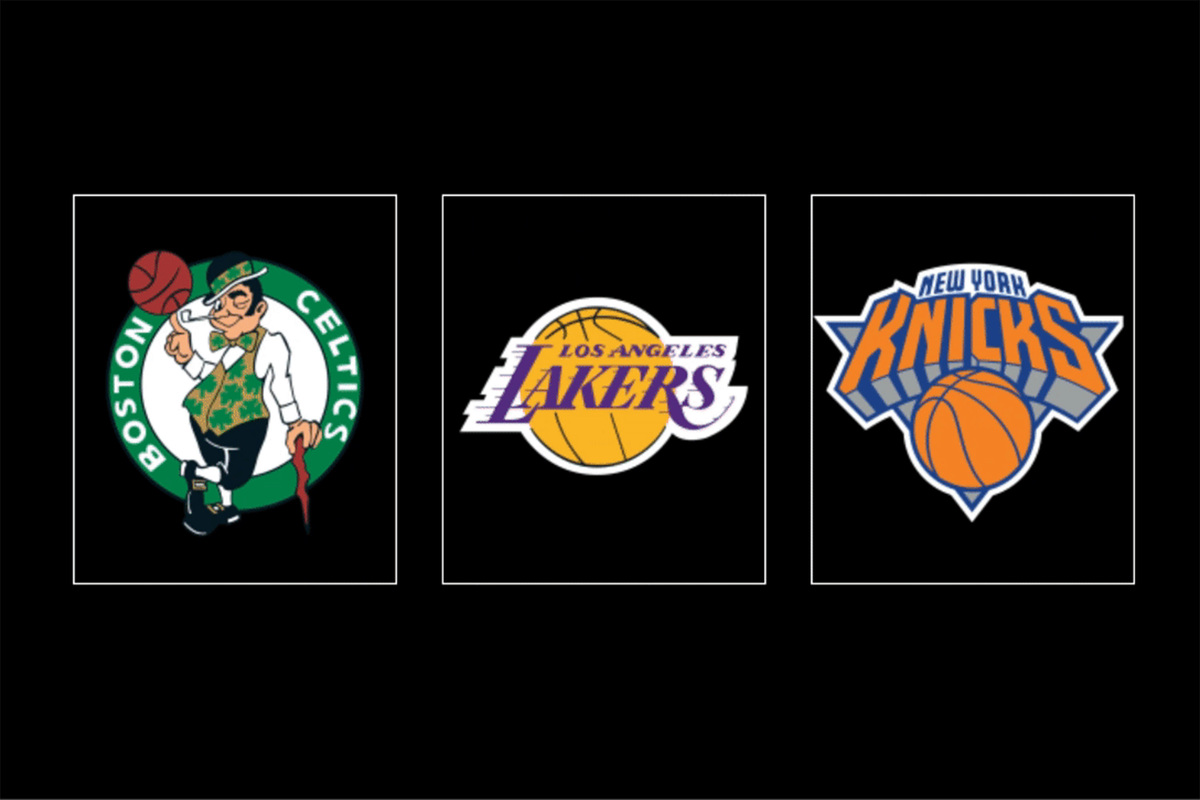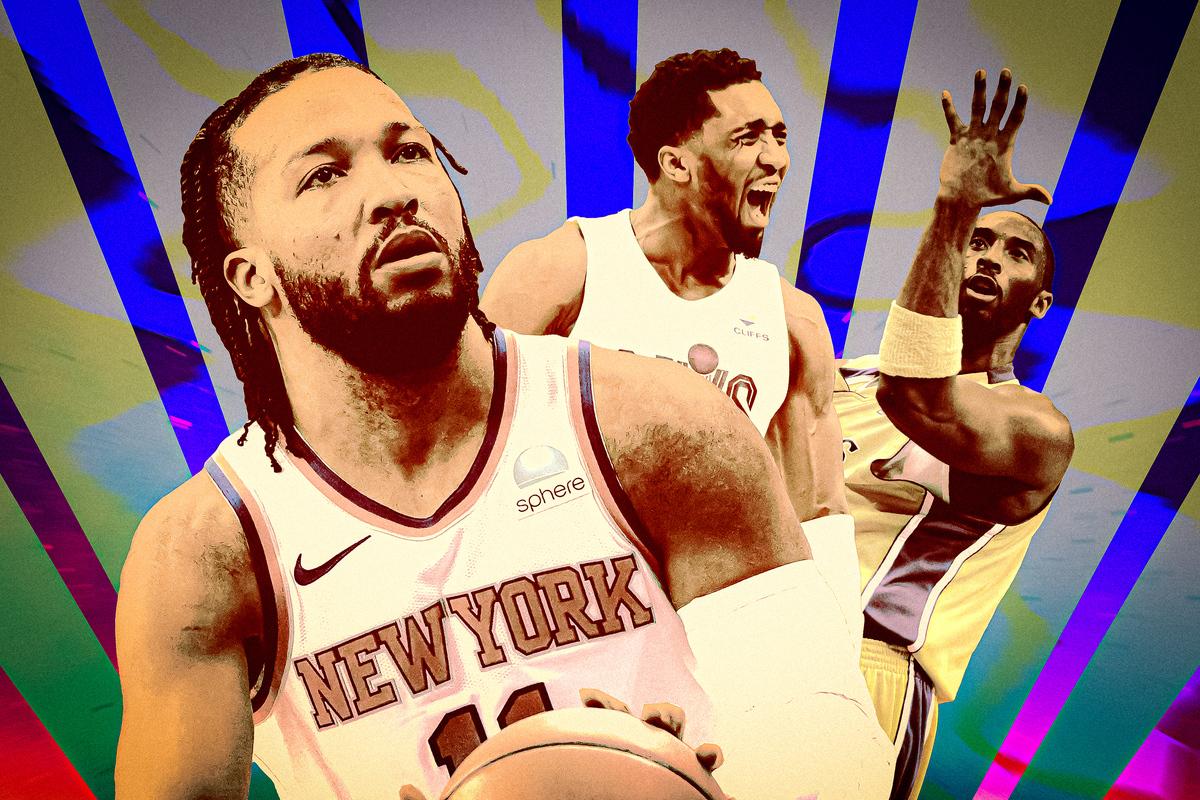
Jalen Brunson is more than just the leading scorer in the 2024 NBA playoffs. He is the centerpiece of the best New York Knicks team in decades and the epitome of one of the biggest trends in the NBA from the 2020s. Over his past five games, Brunson has scored a staggering 210 points. You have to go back to 1993, when Michael Jordan scored 215 points in a ridiculous five-game playoff run, to find the last time an NBA player has had a more prolific postseason scoring run than this.
That’s Peak MJ, and while some bing-bonging Knicks fans might assert that Brunson is the second coming of his airness, that’s not what’s happening here. Brunson’s gaudy box score numbers are awesome by any measure, but they are also the by-product of one of the biggest stylistic movements in the NBA right now; today’s NBA offenses are more concentrated around perimeter stars than ever before.
In a post-Moneyball NBA, teams continue to arbitrage holy efficiency wherever they can find it, and recently that’s meant just handing the ball to your star player over and over again and letting him cook. Usage rates for the game’s brightest stars are soaring, and you don’t need to be Neil deGrasse Tyson to understand how this stellar trend is fueling more and more “big nights” and 40-point outbursts around the association.
For better or for worse, the so-called heliocentric era is here, and when you layer its impact over the 3-point revolution that turned the NBA inside out in the 2010s, you can start to understand how today’s best perimeter scorers are putting up some of the craziest stat lines this league has ever seen. In my new book, Hoop Atlas, I explored the origins and impacts of heliocentric hoops in the NBA. Here is a short excerpt from the book that connects what we are seeing from stars like Brunson back to players like Jordan and Kobe Bryant …
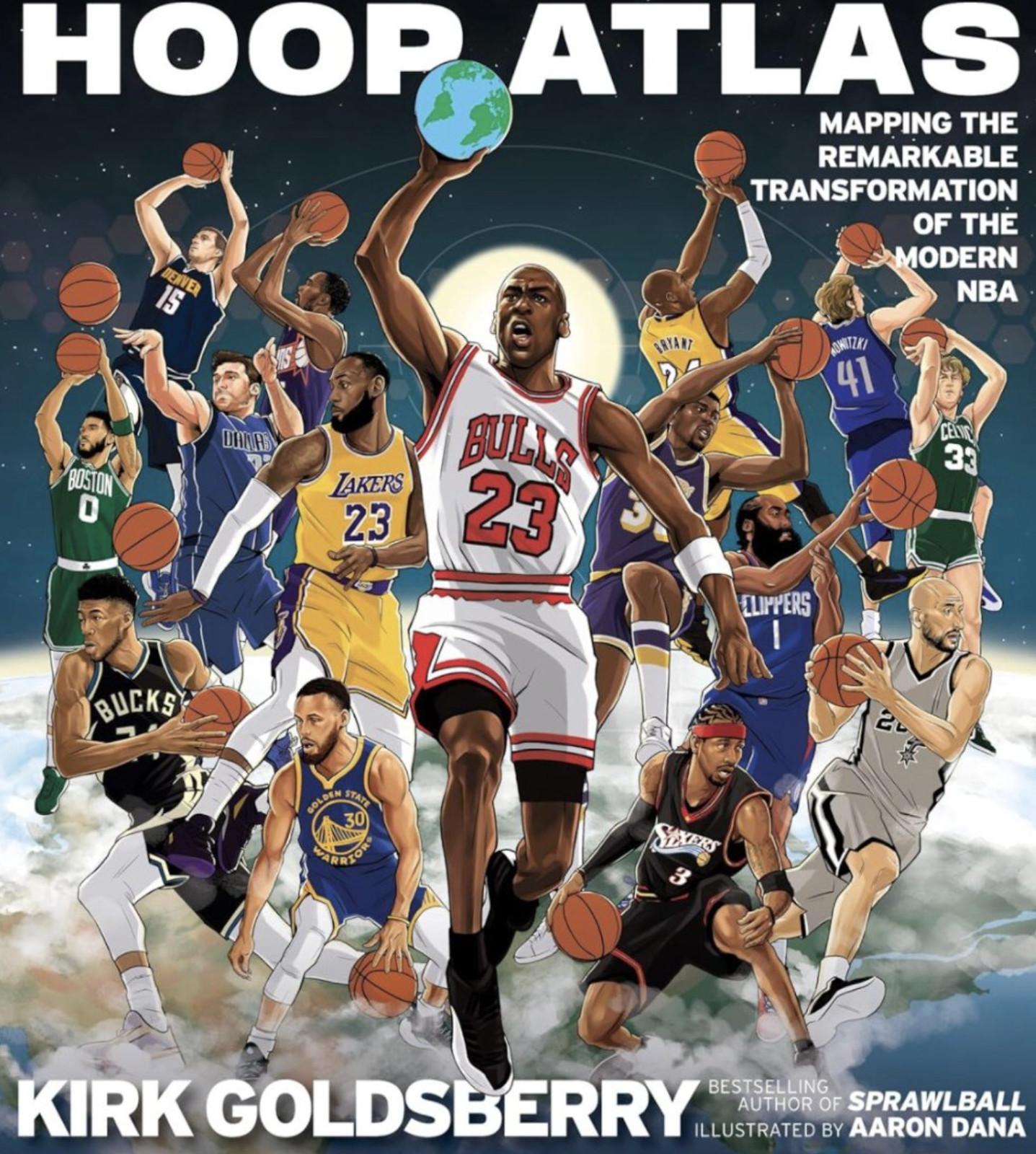
On January 2, 2023, in Cleveland, Donovan Mitchell, the Cavaliers’ 26-year-old all-star guard, scored 71 points in an overtime win against the Chicago Bulls.
Mitchell’s outburst was the most points scored by any player in the NBA since Kobe Bryant scored 81 against the Raptors on January 22, 2006.
Bryant’s legendary night came within one of his most unusual seasons. In 2005–2006, the Lakers weren’t very good. But that season Bryant set career highs in many per-game metrics, including field goals made, field goals attempted, free-throw attempts, and points. He also gave the league a preview of its future.
That season Bryant averaged a ridiculous 35.4 points per game, but he had to. The roster was thin. There was no Shaq. Pau Gasol had yet to arrive in town. Faced with an uncharacteristically shallow Lakers depth chart, Bryant took matters into his own hands … a lot. By the end of the season, Bryant had attempted 2,173 shots, a full 350 more shots than LeBron James, who ranked second in the league by taking 1,823.
The best metric to quantify Bryant’s most shot-heavy season is usage rate, which estimates the percentage of team possessions “used” by a single player when he is on the court. Most of these “uses” are shots, but turnovers and fouls are also counted. In a perfectly egalitarian team environment, every player on a five-person team would have a usage rate of 20, but that’s not the world we live in, and of course some NBA players shoot the ball and use possessions at much higher rates than others. Usage rate is designed to measure this effect.
That year Bryant logged a usage rate of 38.7, which set a new record in the NBA. Estimates of usage rate date back to 1977–1978, when individual turnovers became an official stat, but nobody ever touched that figure until Bryant did it.
Only two players even came close: Michael Jordan in 1986–1987 (38.3) and Allen Iverson in 2001–2002 (37.8). What do all these players have in common? They were hyperactive perimeter scorers who loved to create their own shots all over the court.
The night he scored 81, Kobe was particularly useful. He used a whopping 55.3 percent of the team’s possessions when he was on the floor. He took 46 shots and 20 free throws. He only had two assists, but who cares, Toronto was hopeless against his unassisted attacks. Bryant snaked his way to the rim at will, scoring 26 points in the paint alone. His silky midrangers were falling too. And as a harbinger of things to come in pro hoops, Bryant’s big night was aided by seven 3-pointers.
The Raptors threw different defenders his way, but no matter who was trying to stop Bryant, they failed. Kobe had all the answers everywhere in the scoring area.
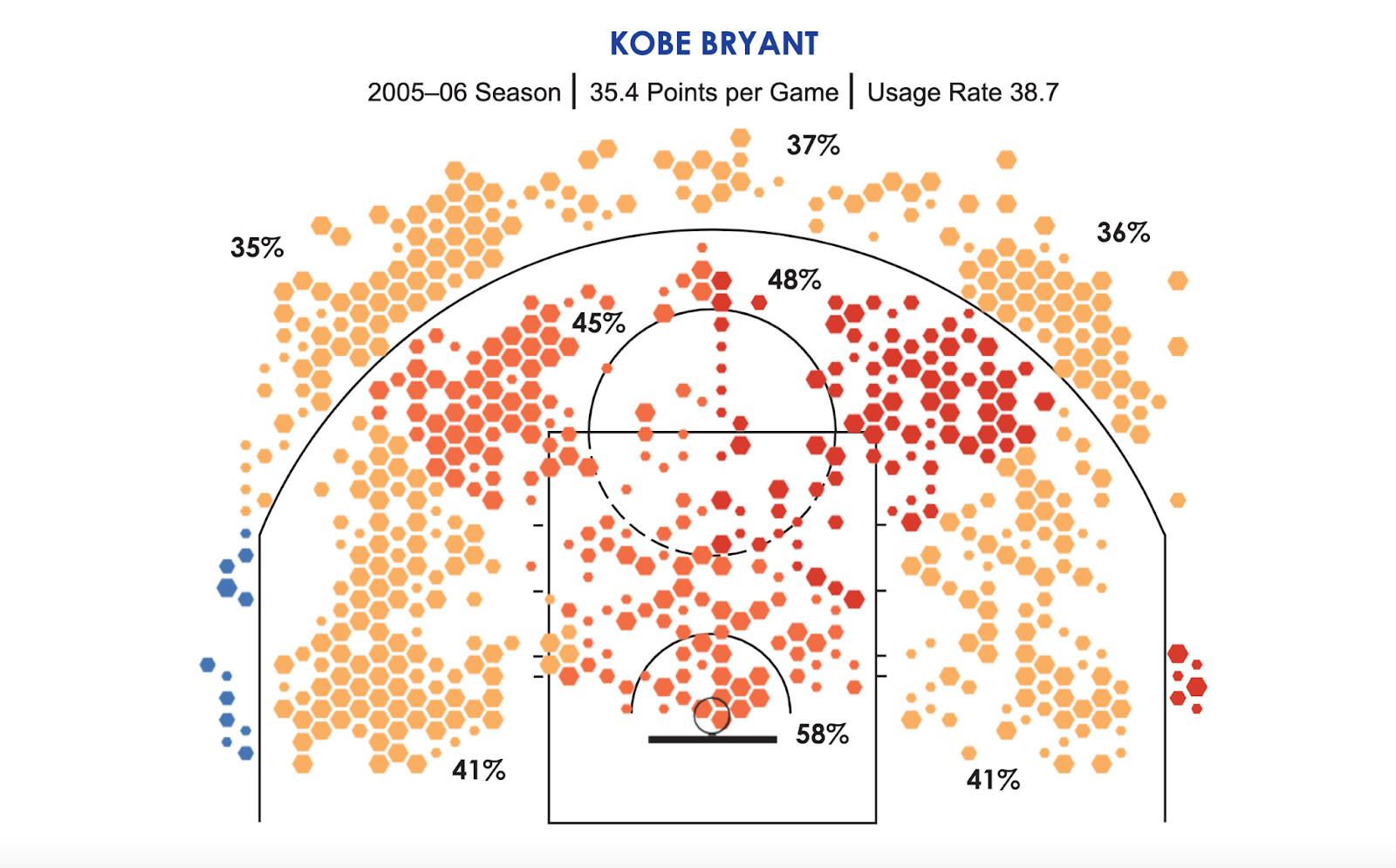
This masterpiece is rightfully considered one of the finest scoring performances ever, but it also set a template. While nobody has scored 81 or more since that game, the league’s biggest stars are scoring more than ever and increasingly putting up wild box score numbers in part because they are playing more like Kobe did in his most prolific scoring season.
In an average game that season, Bryant hoisted up 27.2 shots, more than twice as many as Lamar Odom, who ranked second on the team by taking 11.6 shots per game. Phil Jackson’s offense was based around a simple strategy—just give the ball to Kobe and let him work. It sounds basic, but it was also futuristic. The Kobe Bryant of 2005–2006 was ahead of his time.
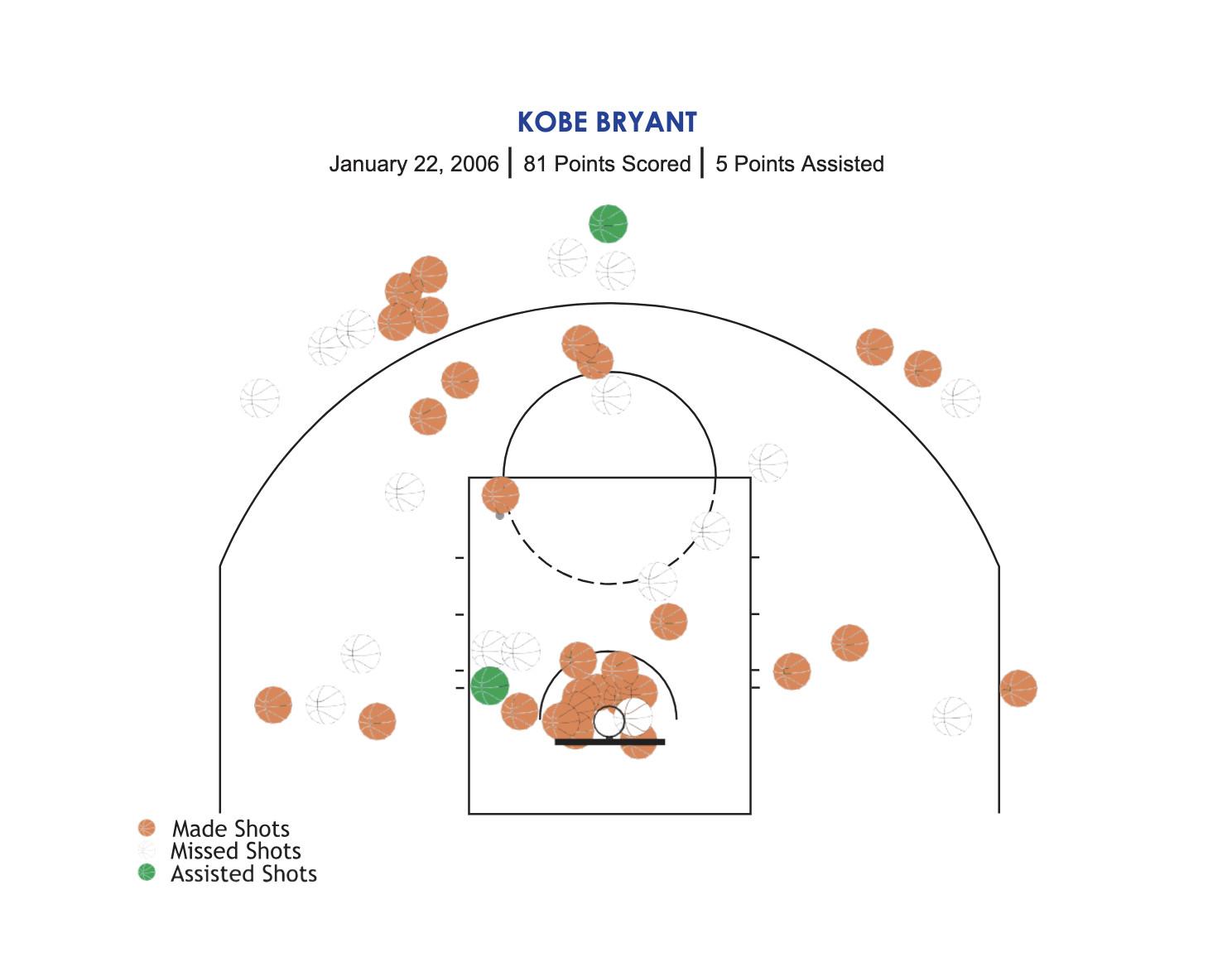
The night Donovan Mitchell scored 71, he had a usage rate of 40.9. Across the NBA, over 60.3 percent of made shots involve an assist, but on Mitchell’s career night, only four of his 22 buckets were assisted.
Eighteen of them were self-created. He converted 18 of his 27 unassisted shots and four of his 10 assisted tries.
Mitchell’s performance was awesome. It was also the quintessential example of one of the definitive trends in the NBA in the 2020s—NBA offenses are increasingly just giving their best players the basketball and letting them work. And in a perimeter-oriented league, that work usually starts downtown.
That night almost all of Mitchell’s buckets started when he was outside of the 3-point line. Among his 122 touches in the game, 112 occurred beyond the 3-point line, just two of his 22 makes began with a touch inside the arc, and one of those came when he intentionally missed his own free throw with less than five seconds remaining in regulation, got his own rebound, and put the ball back himself. In almost every other case, Mitchell either brought the ball up the floor himself or got his initial touch via a teammate far away from the goal.
Back when Wilt Chamberlain used to score endless points, his initial touches were typically all near the cup, in the low post or off of teammates’ misses, but those days are gone. When today’s superstars put up 50-plus, they look more like Kobe than Wilt. En route to 71, Mitchell had 10 layups, and two floaters. He added five stepback jumpers, three pull-up jumpers, one 3-pointer over a ball-screen action, and one catch-and-shoot jumper.
Mitchell’s big night was a modern masterpiece. Twelve of his buckets came in the paint, and seven came from downtown. Only three of his shots came in the midrange. With Darius Garland, his teammate and fellow guard in Cleveland’s backcourt, not playing that night, Mitchell controlled the whole chessboard for the Cavs. He racked up 666 total dribbles—more than twice as many as any other player in the game. The Bulls had no answer for Mitchell’s combination of off-the-bounce jumpers and driving rim attacks.
In the overtime win, Mitchell played 49 minutes and 48 seconds. In that time he drove the ball 29 times and scored 22 points doing it, but that wasn’t all. In many of his drives, Bulls defenders collapsed in to help—Mitchell was swarmed—and his passing that night was also impeccable.
On top of his 71 points as a scorer, Mitchell created another 28 points for Cleveland via his 11 assists. Those dimes led to six 3s and five made interior shots for his teammates.
All told as a scorer and a creator, Mitchell had his hand in 99 points. That’s the second-most points created in an NBA game all time, trailing only Wilt Chamberlain’s historic 100-point game in March 1962.
As a player, Mitchell is emblematic of a new movement toward hyper-usage of perimeter stars around the NBA. As he raced to 71 points, Mitchell used 41 percent of Cleveland’s possessions when he was on the floor. That 40 percent usage-rate threshold is key here. As more of the league’s top stars play more like Kobe in 2005–2006, we are seeing a growing sea of players eclipse that usage-rate threshold in more games.
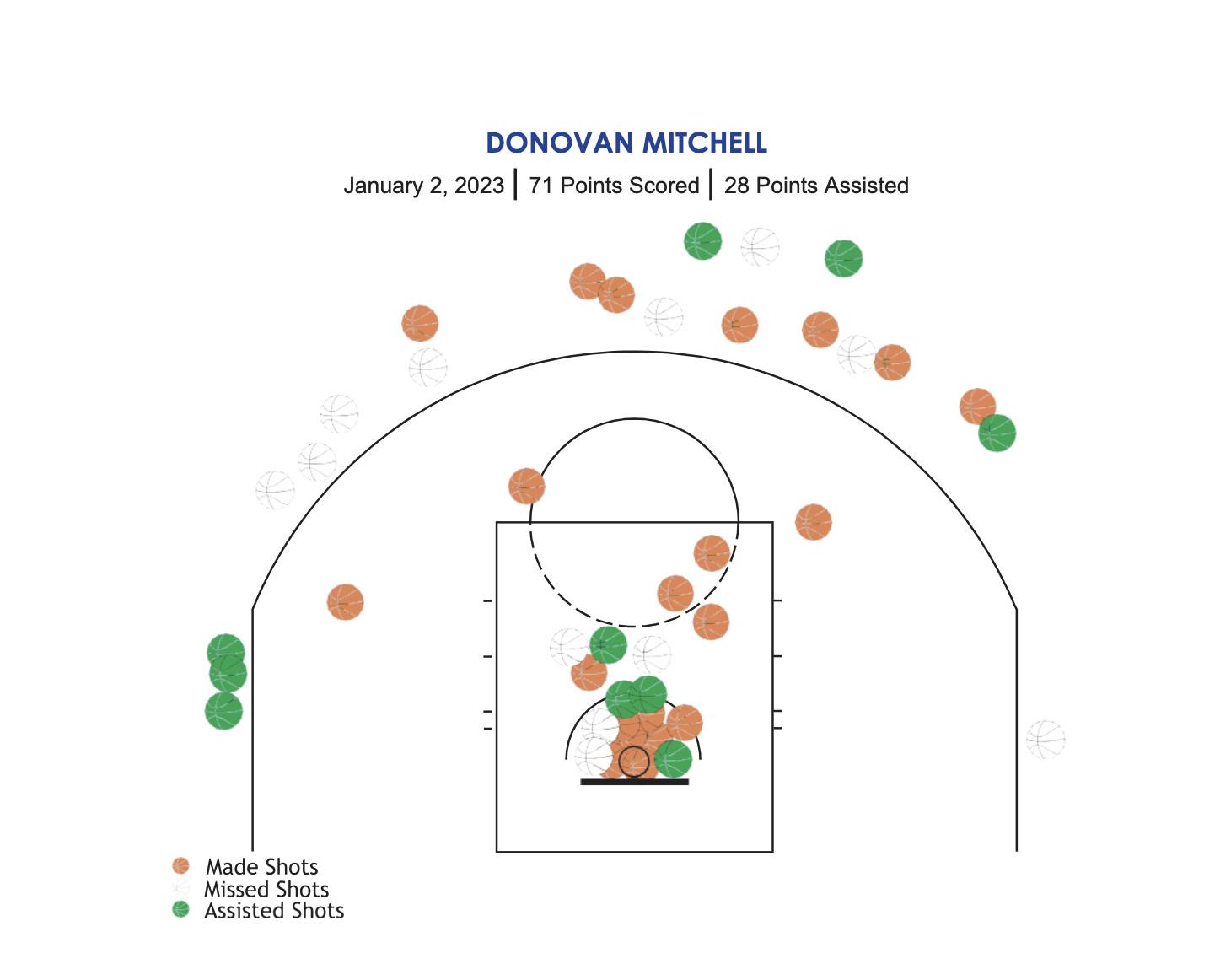
It’s no secret that Kobe Bryant is among the most revered basketball players of the 21st century. Many of the league’s best players in the 2020s cite him as their favorite hooper ever or as a major influence on their craft. From a stylistic standpoint, Bryant’s game was clearly inspired by Jordan, who showed the hoops world that perimeter players could control games and win titles with jumpers.
Jordan was famous for isolating his perimeter defenders, beating them one-on-one, and scoring in their faces. The GOAT may have been the league’s first heliocentric superstar—he led the NBA in usage rate in eight of his 15 total seasons—but tactically, especially when it comes to that 2005–2006 campaign, Bryant took it up a notch.
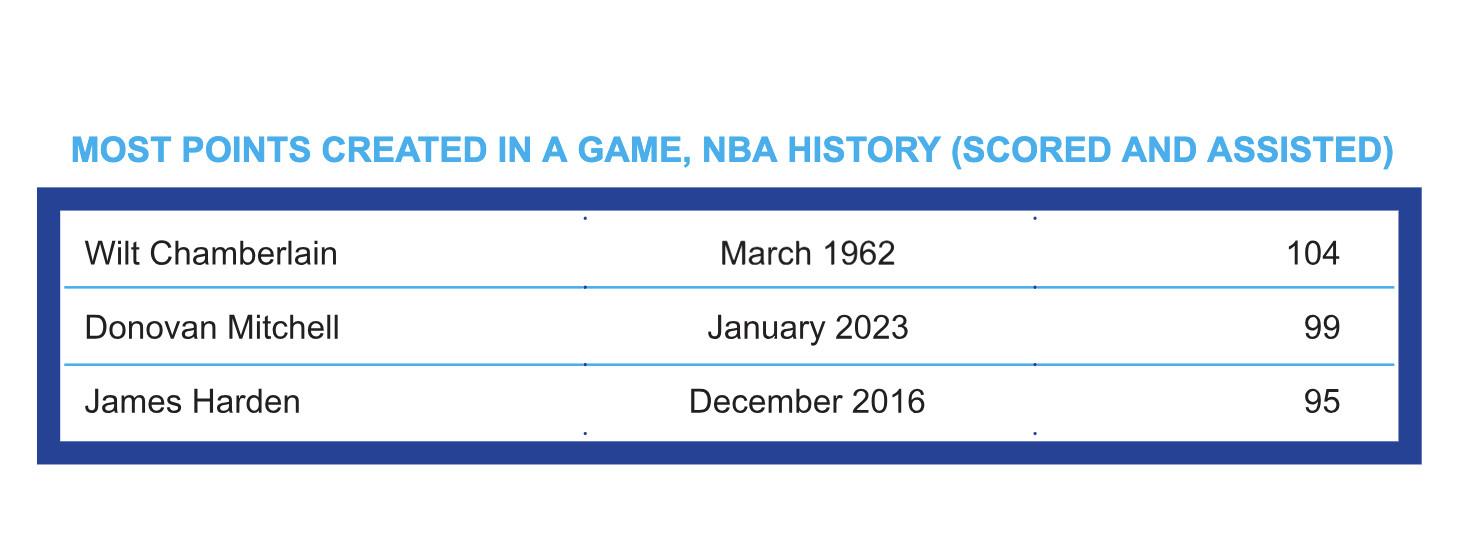
As he won five titles between 2000 and 2010, today’s superstars were watching Bryant. After the Lakers traded Shaquille O’Neal to Miami in July 2004, Bryant became the focal point of the league’s most prestigious franchise for over a decade. He combined scoring and winning as well as anyone in the 2000s, and he did it all in purple and gold. He was the rock star for a new generation of youngsters falling in love with basketball. Those post-Shaq, Kobe-centric seasons in LA have become a template for many of today’s top superstars.
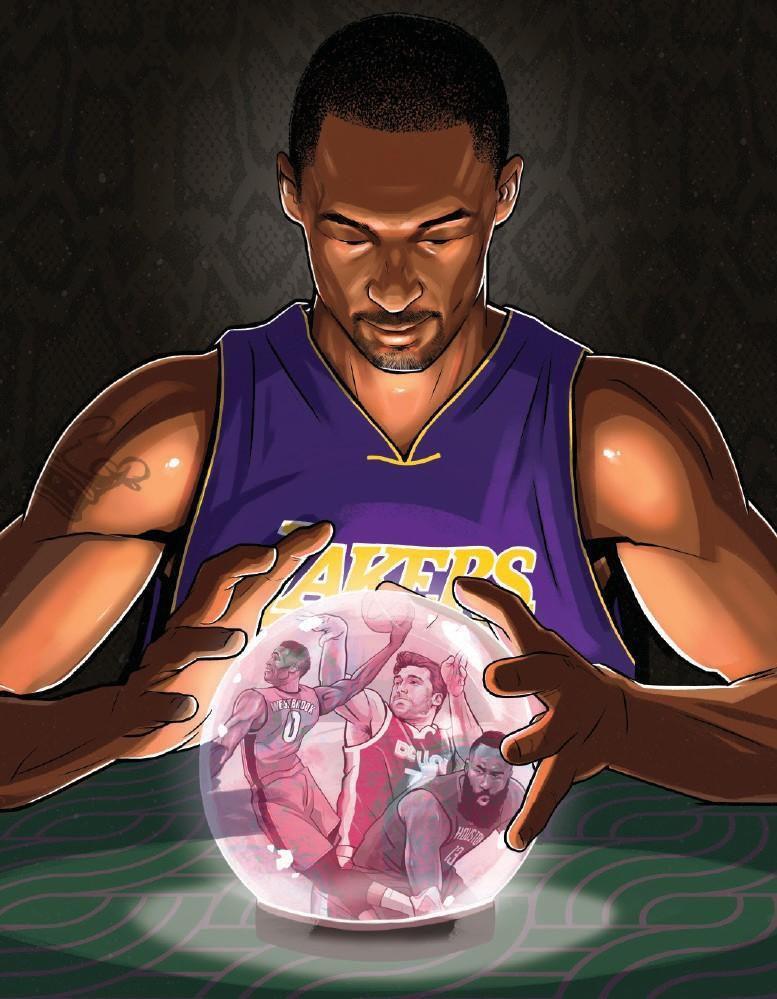
Simply put—and I say this lovingly—ball hogs are having a moment. Today’s top individual scorers are playing more like Kobe did in 2005–2006 than ever before. Just like Phil Jackson, coaches are content to design simple actions that feature their superstars going to work, over and over again. Bryant’s influence is more salient than ever.
It’s hard to overstate Kobe Bryant’s impact on players like Mitchell, Devin Booker, Jayson Tatum, and others in their age group. Bryant was one of the best pure scorers the game has ever seen. As he won those five titles with the Lakers, millions of kids around the world took notes, and a handful of them made it to the NBA and adopted the Mamba mentality as scorers themselves. Late in his life, Bryant mentored many of the NBA’s brightest young stars. Even though he famously crafted his own game off of Jordan, from a stylistic and cultural standpoint, Bryant was arguably the most influential player of his generation, and we are seeing that play out in the 2020s, both on the hardwood and in the box scores.
Kirk Goldsberry has a new book out from Harper-Collins called Hoops Atlas. He’s the New York Times bestselling author of Sprawlball and a former Grantland staff writer. He’s currently a professor at the University of Texas and previously served as vice president for strategic research with the San Antonio Spurs.

